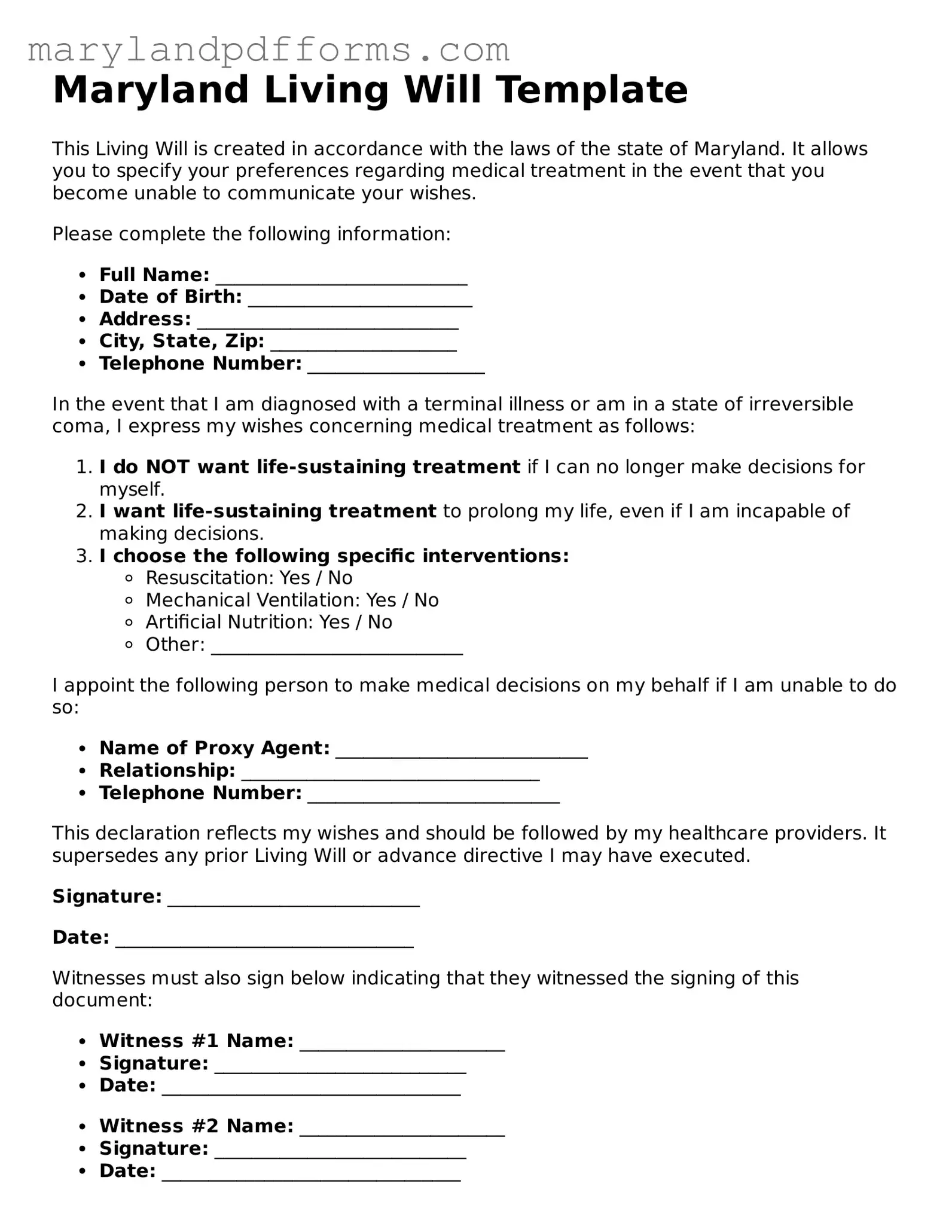- Misconception 1: A Living Will is the same as a Last Will and Testament.
This is a common misunderstanding. A Living Will specifically addresses healthcare decisions, particularly regarding end-of-life care, while a Last Will and Testament deals with the distribution of assets after death.
- Misconception 2: A Living Will only applies if I am terminally ill.
Many believe that a Living Will is only relevant in terminal situations. In reality, it can guide decisions in various medical scenarios where you may be unable to communicate your wishes, such as in a coma or severe injury.
- Misconception 3: I can only create a Living Will through a lawyer.
While having a lawyer can be helpful, it is not necessary. Maryland allows individuals to create a Living Will on their own, provided they meet the state's legal requirements.
- Misconception 4: My Living Will is permanent and cannot be changed.
This is not true. You can modify or revoke your Living Will at any time, as long as you are mentally competent to do so. Keeping your wishes current is essential.
- Misconception 5: Once I fill out a Living Will, my family will automatically know my wishes.
Simply having a Living Will does not guarantee that your family will be aware of it. It’s important to discuss your wishes with loved ones and share the document with them.
- Misconception 6: A Living Will is only for older adults.
Many think that only seniors need a Living Will. However, anyone over the age of 18 can benefit from having one, as accidents and unexpected health issues can happen at any age.
- Misconception 7: A Living Will can cover all medical decisions.
While a Living Will outlines specific healthcare preferences, it does not cover every possible medical situation. It’s meant to provide guidance in certain circumstances, not to address all decisions.
- Misconception 8: My Living Will will be honored regardless of the circumstances.
Although a Living Will is a legal document, there may be situations where healthcare providers cannot follow it due to other legal or ethical obligations. It's crucial to understand the limits of its enforceability.
